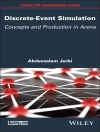Hyperbolic geometry is an essential part of theoretical astrophysics and cosmology. Besides specialists of these domains, many specialists of new domains start to show a growing interest
both to hyperbolic geometry and to cellular automata. This is especially the case in biology and computer science.
This book gives the reader a deep and efficient introduction to an algorithmic approach to hyperbolic geometry. It focuses the attention on the possibilities to obtain in this frame the power of computing everything a computer can compute, that is to say: universality.
The minimal ways to get universality are investigated in a large family of tilings of the hyperbolic plane. In several cases the best results are obtained.In all cases, the results are close to the theoretical best values. This gives rise to fantastic illustrations: the results are jewels in all meanings of the word.
————————
Maurice MARGENSTERN is professor emeritus at the University of Lorraine, he is a member of LITA, the research unit of computer science in the campus of Metz of this university. Professor Margenstern is amongst top world experts in theory of computation, mathematical machines and geometry. He is a pioneer
in cellular automata in hyperbolic spaces.
Зміст
Why hyperbolic geometry?.- Cellular automata and the railway model.- Inthepentagrid.- In the heptagrid.- In the tilings.- In the dodecagrid.- Strongly universal hyperbolic cellular automata.- The help of programming.












